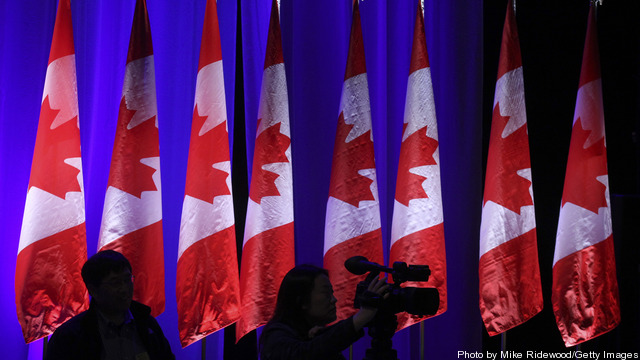It is fitting that the United States and Canada — who share the longest common border of any two countries in the world — also share common values and priorities. These have driven and will continue to drive our strong commitment and collaboration on a pathway to a clean energy future.
This collective commitment was evident today with President Obama and Prime Minister Trudeau’s announcement that our nations have agreed to further strengthen our energy relationship — enabling greater integration of renewable energy into our shared electric grids, and enhancing their resilience and security. The leaders also committed to work together to reduce methane emissions from oil and gas systems, advance opportunities for Arctic communities in climate change mitigation and adaptation, improve heavy duty vehicle efficiency, and accelerate clean energy research and deployment.
Canada and the United States also reaffirmed a shared commitment to innovation and the transformation of our energy systems. At COP21 in Paris last December, the U.S. and Canada worked together to help secure a global climate change agreement and to launch a new global initiative — Mission Innovation. Mission Innovation is a commitment by 20 countries to double their government’s clean energy R&D investment over the next five years. The U.S., Canada and 18 other nations — including five of the most populous in the world — have joined together to send a clear signal to the energy industry: our nations are serious about investing in clean energy innovation.
Since Paris and prior to Minister Trudeau’s visit, Canada and the United States reaffirmed our growing partnership on clean energy. Last month, the U.S. Department of Energy (DOE) and the Department of Natural Resources of Canada (NRCan) joined Mexico in signing a memorandum of understanding seeking to expand cooperation to include climate change and energy collaboration activities.
DOE and NRCan are continuing to work together to advance a clean energy future. The Energy Information Agency and National Energy Board of Canada continue to cooperate on data and energy information, resource mapping and statistics. Also, for the second installment of theQuadrennial Energy Review (QER) on the electricity system from generation through end use,, DOE has held dialogues and workshops with Canadian industry, public sector, non-profit and academic stakeholders; we have also had similar discussions with our Mexican counterparts. Through these consultations, the second installment of the QER will recommend sound policies to guide the modernization of the interconnected North American electric grid and to continue to improve its reliability, safety, security, affordability and environmental performance.
President Obama and Prime Minister Trudeau reaffirmed their commitment to help lead a global transformation of the world’s energy systems. DOE and its counterparts in Canada will play a critical role in implementing the commitments and initiatives of our leaders — we look forward to continuing our work with our Canadian colleagues to make the vision of our leadership a new clean energy reality.

